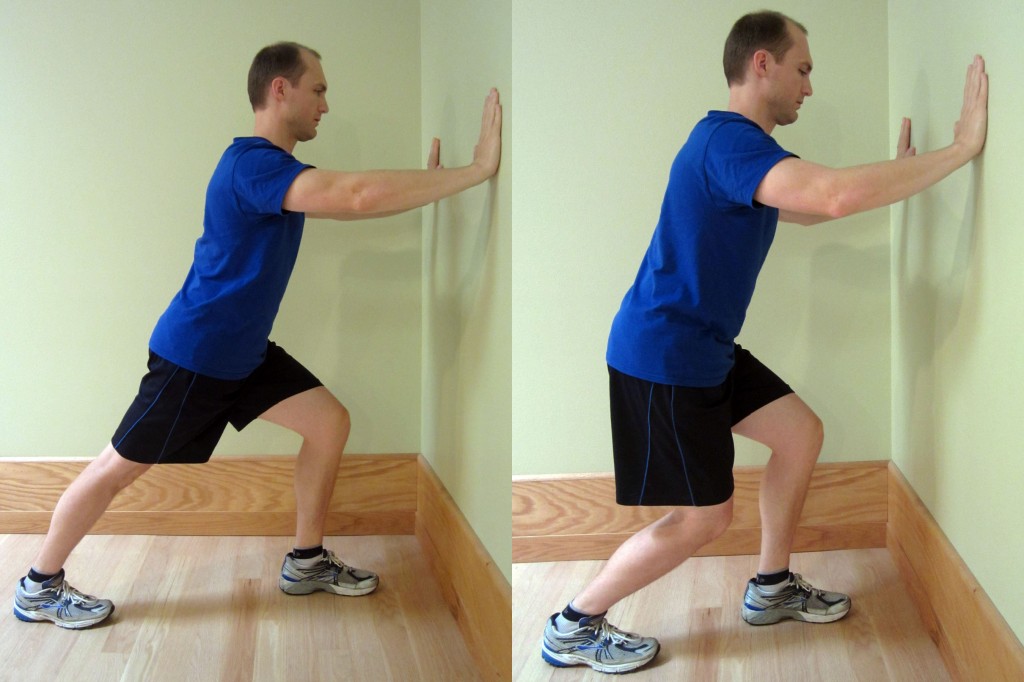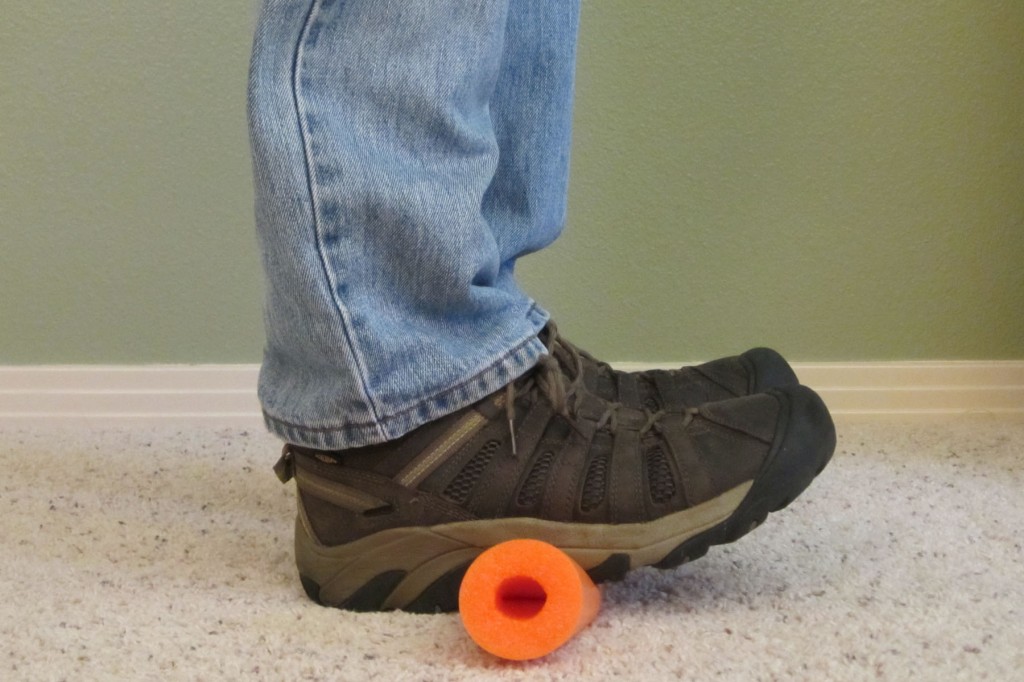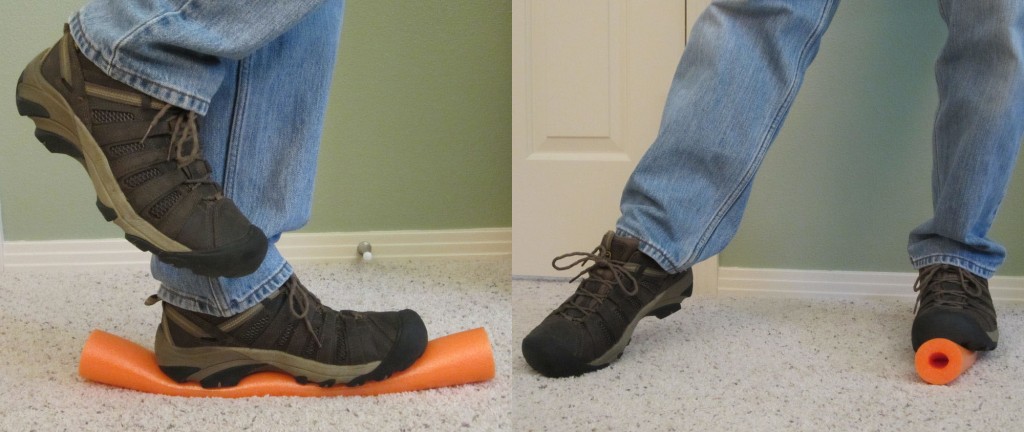Balance is an important part of mobility. It is usually overlooked and taken for granted until mobility is significantly affected. Like all exercise, balance exercise should be fun and convenient. So, how do you use a common water noodle to improve balance? Let’s get started!
Integration of lower extremity muscle strength and range of motion (ROM) is important to maintaining good balance and mobility. Your calf muscles play an important role in balance. If your calves are tight, then you are more likely to tip over backward as you age. The strength of the calf muscles is also important for ambulation. Try these two exercises to stretch your calves. Hold each stretch for at least 30 seconds twice each leg.
Your ankles and calves work together to prevent falls which utilizes a reflex known as ankle strategy. It can help you recover from minor losses of balance. It is an essential front to back movement of the ankle. If you are pushed forward slightly, the ankle will bend and the calves will push you backward so you can maintain your upright stance. If you have tightness in your calves, loss of ankle ROM, weakness or poor sensation, then this crucial strategy is affected. The use of a water noodle can help address this issue. (You can purchase one at your local retailer or sometimes, even at the dollar store. I have cut mine down to about one foot in length to be more manageable.)
First, stand on the water noodle. Very slowly and under control, try to keep your balance while you rock your feet back and forth (touching your toes, then your heels). Feel the motion of the feet and the control of the ankles. You can practice this exercise with your shoes on or off. For added difficulty, close your eyes!
A water noodle can also be used to work on proprioception and somatosensory integration for balance. Somatosensory is the integration of the neurological system (the brain and nerves throughout the body) with the musculoskeletal system. This includes all the touch and movement nerve receptors in the muscles, tendons, and joints. This also includes proprioception, which is the brain’s ability to know where the body is located in space. For example, if you close your eyes and lift your arms overhead, you know where yours arm are located. Practicing balance on a softer or unstable surface helps to train the somatosensory system and helps to work the smaller stabilization muscles in the ankle. This is also an excellent way to prevent ankle sprains!
Practice standing on the water noodle. At first, you may need to use your finger (or hand) on a counter top or chair for balance. Practice holding for 30 seconds to start. Then build up to holding the position for a minute. To increase the difficulty level, try standing on the water noodle with one foot, then gently touch the opposite toe on the ground and bring it back. The further the foot reaches out, the harder the exercise. Imagine the numbers on a clock and work your way around the clock and back, each time gently touching a tip toe and then returning the foot back to the standing leg. Repeat on the other side.
For additional information on the five different body systems which affect balance and how they work together to insure proper balance and mobility in our environment, please refer to How Do I Improve Balance? (Part I) and How Do I Improve Balance? (Part II). If you desire specific advice, I highly recommend that you seek assistance from a qualified medical doctor or physical therapist that is well versed in balance related disorders.
One of the best ways to maintain your balance as you age is to remain active and move more! Balance is an integration of many body systems, so movement is an excellent way to work on all of the body systems!
Don’t forget to subscribe to my e-mail list to receive each week’s blog post sent directly to your inbox. You will automatically gain access to my FREE resource, My Top 8 Stretches to Eliminate Neck, Upper Back, and Shoulder Pain. Download the .pdf file, which is full of photos and exercise instructions, to get started! Subscribe now by clicking on the subscribe button located on the upper right-hand sidebar. (Or scroll down further if you’re on a mobile device.) Thank you!
Also, if you have a question that you would like featured in an upcoming blog post, please e-mail contact@thephysicaltherapyadvisor.com.




